Science & Engineering Libraries
bioRxiv: a free open access archive for unpublished preprints in the life sciences
- Bioengineering
- Cancer biology
- Cell biology
- Ecology
- Epidemiology
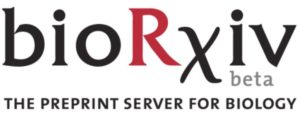 Genomics
Genomics- Molecular biology
- Neuroscience
- Pharmacology and toxicology
- Scientific Communication and Education
Life, gene editing, and rock ’n’ roll: 5 things we learned from Jennifer Doudna’s talk
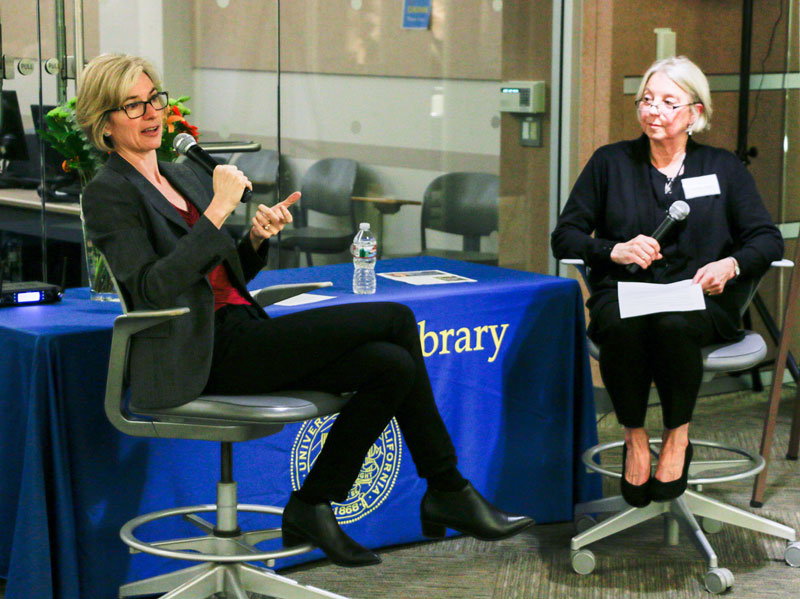
When Jennifer Doudna was in high school, a guidance counselor called her into his office to talk to her about her career.
“What do you want to be when you grow up?” Doudna recalls him asking.
“I want to be a scientist,” Doudna said.
“Girls don’t do science,” she remembers him saying.
She has been proving him wrong ever since.
For one, the UC Berkeley professor co-invented CRISPR-Cas9 gene editing, hailed as the biggest biological breakthrough since the discovery of DNA’s molecular structure in the 1950s. The technology comes with the possibility of curing devastating diseases and improving lives but also raises ethical questions.
“If you have a tool that allowed precision changes to DNA to be made,” she said, “that provides a way that, in principle, one could alter human evolution by making changes that could become inherited by future generations.”
In the years that followed, Doudna has become instrumental in raising awareness and broadening understanding — within the scientific community and beyond — about the technology. It’s a duty Doudna doesn’t take lightly. “It’s something I feel deeply passionate about,” she said.
Doudna sat down in front of an audience Tuesday in the Bioscience & Natural Resources Library for a chat about her book (“A Crack in Creation” is out this year), her life, and her scientific breakthrough.
Here are five things we learned.
1. Her upbringing in Hawaii influenced her career path.
Growing up, Doudna lived in Hilo, a “small, rural town,” on the big island of Hawaii. It was living in Hawaii, surrounded by diverse wildlife (“blind cave spiders and all kinds of interesting plants,” she said) that sparked her lifelong love of science.
“When I think back on how I got interested in science and biology and chemistry,” she said, “it really, I think, stems from growing up in that island environment and wondering about how organisms can evolve to live in a setting like that.”
And in 10th grade, Doudna’s interest in science deepend, thanks to a chemistry teacher, Miss Wong, who “taught us kids that science was about solving puzzles — it was about asking questions and figuring out how to answer them.”
“I absolutely loved it,” she said. “It was fun, and I started imagining that it would be really great to grow up and have someone pay me to do what I thought was just kind of fun — playing around in a lab.”
2. Even bioscientists get the blues.
In her 40s — and well into her second decade of running her lab — she started to question whether her work was going to have an impact.
“I really almost had sort of a midlife crisis,” she said.
She took a leave of absence at Berkeley for an opportunity at a company — which, in retrospect, was the wrong move.
Although it was a great company, she began to realize, “It was just the wrong fit for me,” she said. “I felt it in my gut. This is not where I’m meant to be.”
“I realized that I just loved working with students. I loved being at a public university,” she said. “I really believed in that mission of having education available to anyone who can come and wants to learn and wants to work at this wonderful place that we have here.”
She asked her former colleagues at UC Berkeley if she could return.
“They took me back,” she said.
3. She didn’t like the name of her book at first.
Neither Doudna nor co-author Samuel Sternberg liked the title “A Crack in Creation,” which their editor suggested.
“It sounded very ominous, somehow,” she said.
Neither could think of a better title, and they were eventually won over.
“It does sort of convey this idea that … we’re sort of at a fork in the road, in a way, and it really does feel kind of profound at times to me,” she said. “We’re at a point where now we as a species have a tool that will allow us to control … who we are.”
4. She has a complicated relationship with the spotlight.
“People have called me the public face of CRISPR, and I’m sort of shocked by it,” she said.
But with glare of the spotlight comes the opportunity to raise awareness and educate the public.
“I feel sort of a sense of honor that I’ve been sort of thrust into this position of being a spokesperson for science, and it’s something that I feel deeply passionate about,” she said.
5. She had a brush with rock royalty.
With her profile having reached new heights come opportunities that she had never previously imagined.
“I was at a thing in London not long ago, and I turned around, and behind me was (rock guitarist) Jimmy Page,” she said. “We just struck up a conversation. We started talking about science, and about guitars, and Led Zeppelin.
“And I said to him, ‘I’m such a fangirl. I mean, I listened to your music growing up. Would you mind if I took a picture with you?’
“And (now) I have a picture with Jimmy Page.”
Conference Reflections: A Chemistry Librarian Discovers the Digital Humanities

Every year librarians from across the UC System come together to learn about emerging trends in library and information science at the LAUC-B conference. The 2017 theme was, “Focus on the visual: Digital Humanities and Libraries.” As the Chemical Information Librarian at UC Berkeley some people might wonder, what do I have in common with the digital humanities? I am an experienced chemist, but am a new librarian at UCB and have a lot to learn about the amazing work being done by my colleagues. The UC system supports many departments at the top of their field, so as you can imagine, the librarians for those departments and the entire system are often passionate and talented individuals.

As a subject liaison, I feel strongly that interdisciplinary and collaborative projects are leading to some incredible outcomes, spanning across the humanities and sciences. My favorite talk of the day came from the Associate Vice Provost and Executive Director of the California Digital Library (CDL), Günter Waibel, who delivered the opening keynote and outlined his work doing the first ever 3D printed bust of a sitting President, which had a great societal response. As librarians we always hope our work will touch people in powerful ways, it’s still unclear to me what my contribution to the field will be. As long as I can attend events like the LAUC-B conference, I am sure to find a great idea.
Author Event with Dr. Jennifer Doudna
Tuesday, November 14, 2017. 4:30-6:00pm.
Bioscience & Natural Resources Library, 2101 VLSB.
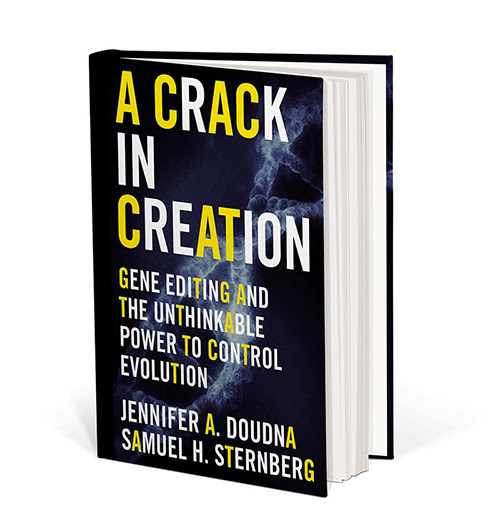
Dr. Jennifer A. Doudna, Professor of Molecular and Cell Biology and Chemistry, UC Berkeley and Investigator, Howard Hughes Medical Institute, will discuss her new book, A Crack in Creation: Gene Editing and the Unthinkable Power to Control Evolution, a fascinating chronicle of the discovery of CRISPR and the ethical questions to come.
Sponsored by: University Library, Life & Health Sciences Division.
The Library attempts to offer programs in accessible, barrier-free settings. If you think you may require disability-related accommodations, please contact the event sponsor, Susan Koskinen, skoskine@berkeley.edu, as soon as possible.
De Gruyter and Princeton Mathematics eBook Collection
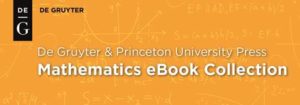
The Library recently purchased the De Gruyter and Princeton Mathematics eBook Collection. This collection consists of titles from nine well-known series published by Princeton University Press and De Gruyter – including books from the very respected series Annals of Mathematics Studies back to 1940! These series include highly-cited works from influential mathematicians such as Church, Halmos, Milnor, Polya, and Weyl, among many others.
The nine series are:
- Annals of mathematics studies
- De Gruyter expositions in mathematics
- De Gruyter series in nonlinear analysis and applications
- De Gruyter studies in mathematical physics
- De Gruyter studies in mathematics
- Mathematical notes
- Princeton mathematical series
- Princeton series in applied mathematics
- Radon series on computational and applied mathematics
Ingenuity Pathway Analysis (IPA) workshop

A representative from Qiagen will offer a hands-on training workshop on using IPA to interpret expression data (including RNA-seq).
You are invited to participate in this free training, and are encouraged to bring your own laptop or use the computer workstations in our training room.
Please register if you are interested in attending.
The workshop will cover how to:
- Format, upload your data, and launch an analysis
- Identify likely pathways that are expressed
- Find causal regulators and their directional effect on gene functions and diseases
- Build pathways, make connections between entities, and overlay multiple datasets on a pathway or network
- Understand the affected biological processes
- Perform a comparison analysis: utilize a heat map to easily visualize trends across multiple time points or samples
Questions? Please contact Elliott Smith (esmith@library.berkeley.edu)
Reaxys 2.0 Migration
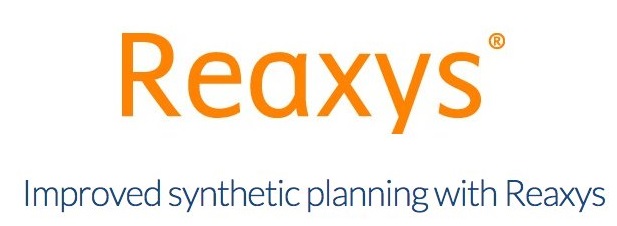
Reaxys is a web-based tool for the retrieval of chemistry information and data from published literature, including journals and patents.Chemists at Berkeley are active users of Reaxys, doing 1000’s of searches/month!
Elsevier has rolled out a new version of Reaxys (Reaxys 2.0) that has a number of enhanced features, including:
- An increasingly simple user interface. The opening page has spaces to (a) type in the search query in a search bar or (b) type in the name of the structure or draw the structure.
- Search functions using the querylets to increase the specificity of the search and reduces the time that the user has to filter the results post search.
- Search functions that contain auto suggest. Similarly it also searches for singular/plural and synonyms
- Using Boolean operators (obviously one of Elsevier’s strengths)
- Listing hits in the initial screen (post search). No secondary search needed.
- A big increase in the number of searchable Asian patents
The migration is Reaxys 2.0 is ongoing, but migration should be completed by November 30, 2017. Soon UCB users will be directed to the new interface, but will continue to have the option to use the old interface for the foreseeable future.
JAMAevidence: Using Evidence to Improve Care
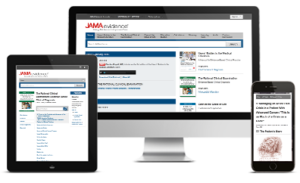
JAMAevidence helps clinical decision makers identify the best available evidence.
Check out their guides to the systematic consideration of the validity, importance, and applicability of claims about the assessment of health problems and the outcomes of health care.
Engineering Academic Challenge!
The Elsevier Engineering Academic Challenge is back! The team-based challenge lasts for five weeks and began on September 18. Register here to get started and win prizes!
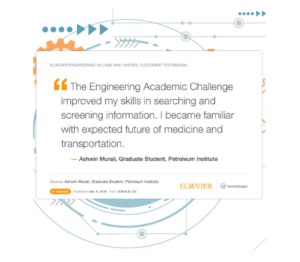
UPDATE: Elsevier Data Publishing Requirements
Last spring, we posted about data publishing requirements from Elsevier, Springer/Nature, and AAAS. At the time, Elsevier was the most lenient on their data publishing policies and used language that was suggestive and encouraging of data publishing. As of September 5th, 2017, that is no longer the case. Elsevier has signed on to the Transparency and Openness Guidelines (TOP) through the Center for Open Science. We talk and write a lot about transparency, openness, and sharing in science; however, there is a disconnect between the conversations and the daily workflows and practice of scientists. I was once told, after giving a workshop on data sharing, that I was an idealist trying to preach to realists. In order to close that gap, we need more publishers, like Elsevier, to make the ideal a reality, and enforce strict guidelines on data sharing and publishing.
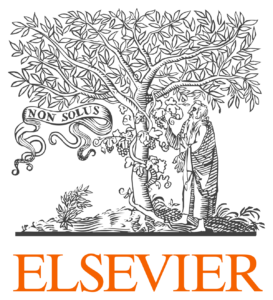
Let’s take a look at the 5 new data sharing requirements, which will be implemented for 1800 of Elsevier’s titles:
Option A: you are encouraged to
- deposit your research data in a relevant repository
- cite this dataset in your article
Option B: you are encouraged to
- deposit your research data in a relevant repository
- cite this dataset in your article
- link this dataset in your article
- If you can’t do this, be prepared to explain why!
Option C: you are required to
- deposit your research data in a relevant repository
- cite this dataset in your article
- link this dataset in your article
- if you can’t do this, be prepared to explain why!
Option D: you are required to
- deposit your research data in a relevant repository
- cite this dataset in your article
- link this dataset in your article
Option E: you are required to
- deposit your research data in a relevant repository
- cite this dataset in your article
- link this dataset in your article
- peer reviewers will review the data prior to publication
The new Elsevier policy is similar in nature to Springer/Nature with their tiered system of requirements. It’s important to check with your individual journal to see which option it falls under. Ideally, you will always follow option E, where you make your data openly available, cited, linked, and provide the proper amount of metadata to go through the peer review process or be reused by another researcher.
If you have any questions about how to enrich the metadata of your dataset, or where to deposit your research data, please email researchdata@berkeley.edu!